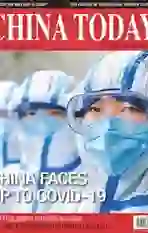Are We Ready for a Major Epidemic?
2020-03-23
Since last December, the novel coronavirus outbreak in China has drawn widespread attention from far and wide. According to experts, the coronavirus disease 2019 (COVID-19) has outstripped SARS of 2003 and the H1N1 pandemic of 2009 in terms of the damage it has created. The fact that there are still no vaccine nor specific medicine for the former two epidemics has made people even more worried about the current situation.
The spread of the virus has respected no borders, and in the face of this common enemy of mankind, the WHO DirectorGeneral Tedros Adhanom called on the world to unite together to fight against the epidemic. The Chinese government has taken the most comprehensive, strict, and thorough prevention and control measures it could have taken, and positive results have been achieved as a result. The death rate remains low, breakthroughs have been made in medical treatment, and the number of patients cured and discharged from the hospital continues to grow.
Chinas quick responses and effective measures have earned it applause and extensive support from the international community. Political leaders from many countries have made positive comments on and supported Chinas fight against the epidemic. Dozens of countries and international organizations have reached out to China immediately, providing much-needed emergency medical supplies. People of other countries have also cheered for China and sent sincere and moving messages of encouragement.
Under the coordination of the WHO, researchers around the world have strengthened cooperation to fight against the epidemic side by side. On January 7, China shared the genome sequence of the novel coronavirus with the international community, enabling many countries to rapidly detect suspected cases in their own countries so as to carry out effective prevention. On February 11 and 12, a two-day global research and innovation fo- rum led by the WHO was held in Geneva to mobilize international action in response to the novel coronavirus emergency, gathering roughly 400 participants, including leading scientists from virusrelated disciplines around the world and representatives of public health agencies.
Meanwhile, a team of international experts led by the WHO arrived in China to work with Chinese experts. Their fields of expertise include clinical management, virology, vaccine and drug R&D, epidemiology, public health, ect. More efforts will be made to speed up scientific research and innovation and build a global novel coronavirus detection and tracking network.
Since the outbreak, China has been actively trying to treat the disease by combining traditional Chinese medicine (TCM) and Western medicine. After being treated with TCM, patients with mild symptoms recover more easily, those in severe and critical conditions can be improved, and some sequelae will be avoided for convalescent patients.
A total of 23 COVID-19 patients were discharged from the Hubei Provincial Hospital of Integrated Chinese & Western Medicine on February 6 after receiving the combined treatment of TCM and Western medicine. On the same day, the Guangdong Provincial Medical Products Administration officially announced that Pneumonia No.1, a traditional Chinese medicine granule, will be used in 30 designated hospitals to treat COVID-19 in the province.
The rapid development of modern transportation and information technology has brought people living all over the planet closer together. In the face of a major epidemic that transcends national boundaries, its necessary for the whole international community to work together, which is not only an important manifestation of internationalization, but also the rational attitude and inevitable approach required to surmount the public health emergency.
